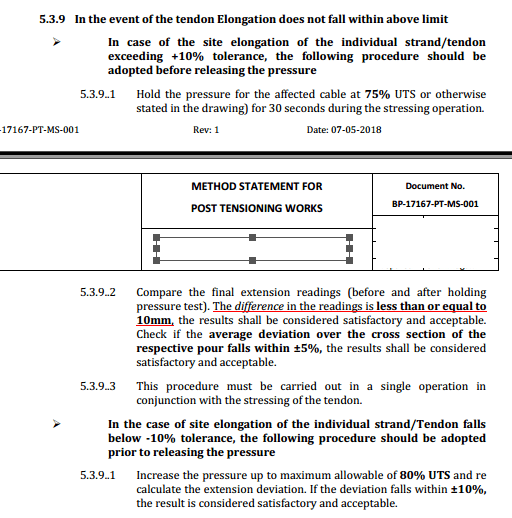struggle67
Structural
- Mar 29, 2013
- 116
Hi
Good Day To you
In a post-tensioned building, if the tendon elongations are more than the theoretical elongation by about 15%, is there a way/method to verify whether the strands were yielded.
Anyway if elongations fall out of tolerance, most of PT companies here will do this ...

But it seems to me that almost all of them do not know why they are doing it and it really disturbs me. I would like to know why.
When elongation is more, stress upto 80% to overcome higher friction?
When elongation is less, why stress 75% and hold the pressure?
Thanks
Good Day To you
In a post-tensioned building, if the tendon elongations are more than the theoretical elongation by about 15%, is there a way/method to verify whether the strands were yielded.
Anyway if elongations fall out of tolerance, most of PT companies here will do this ...

But it seems to me that almost all of them do not know why they are doing it and it really disturbs me. I would like to know why.
When elongation is more, stress upto 80% to overcome higher friction?
When elongation is less, why stress 75% and hold the pressure?
Thanks

